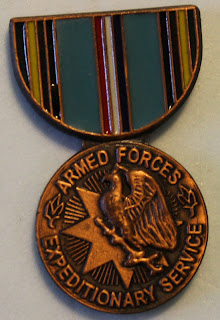All the info I can find related back to this medal.....available for purchase at
http://www.etsy.com/shop/SIMPLICITYSOLUTIONS?ref=si_shop
The communists'
Red Army (later the
People's Liberation Army) had first been formed in 1927 when the
Nationalist 27th Division
mutinied. After ten years of fighting, though, in 1937,
Japan invaded
China proper. To counter this threat, the Communists and Nationalists formed the United Front (the anti-Japanese alliance between the Chinese Nationalists under
Chiang Kai-shek and the Chinese Communists). Most Communist forces wore either Nationalist uniforms or civilian clothes.
The two main Communist forces were the
New Fourth Army and the Eighth Route Army (the larger of the two), called such after their nominal designations in the Chinese national army. Consisting of three
divisions (the 115th, the 120th, and the 129th, commanded by
Lin Biao,
He Long, and
Liu Bocheng respectively, the 8th Route Army's main advantage during
World War II was its ability to blend in with
Japanese forces when behind enemy lines. Also, the Communist forces could easily attack Japanese supply lines and small
garrisons. The 8th Route Army had also engaged in political and propaganda work, helping to increase communist support among the populace.
Formed in 1937 at the time of the second United Front, the 8th Route Army was headed by Mao Zedong's old comrade in arms
Zhu De but was placed under the overall direction of the Nationalist government.
In 1938 the 8th Route Army was reorganized as the 18th Army Group under the 3rd Military Region commanded by Nationalist
Yen Hsi-shan. In practice, however, the army remained under Zhu De's control and operated independently of the Nationalists, especially after 1941, when relations between the Communists and Nationalists had deteriorated.
At the start of
World War II, the 8th Route Army infiltrated itself behind Japanese lines in Northern China, where it established many bases of operations. It recruited Chinese semi-trained
militia. The army grew from 30,000 troops in July 1937 to 156,000 in 1938 and 400,000 in 1940. Reduced to about 300,000 by the fierce fighting between 1941 and 1944, its size almost doubled to a total of 600,000 men in 1945.
Following the end of World War II, the 18th Army Group was incorporated into the new
People's Liberation Army. Units from the former 8th Route Army were active in the 1948 capture of
Northeast China from the Nationalists, which placed the communist forces in a position to take North China and turn the civil war in their favour




